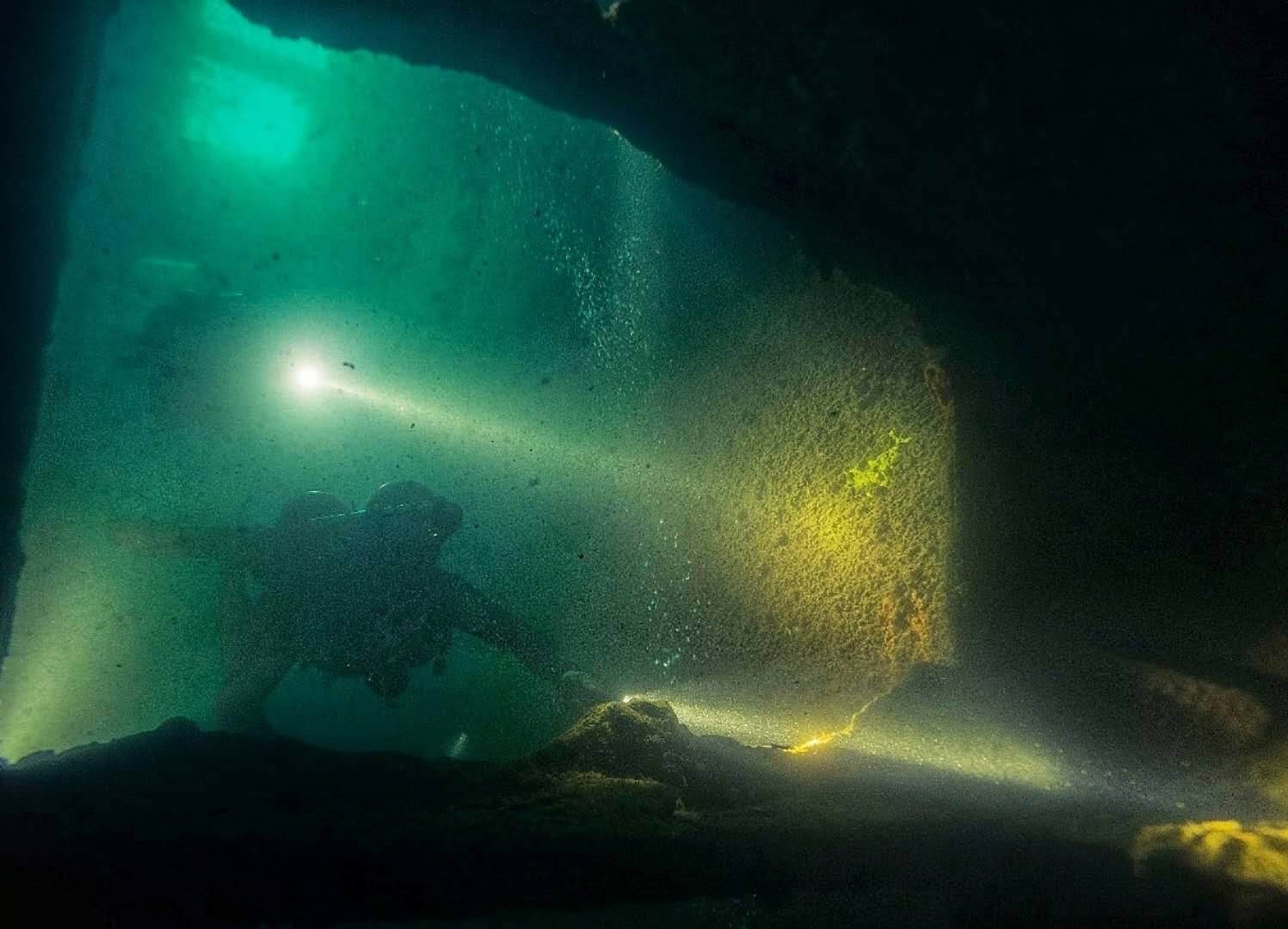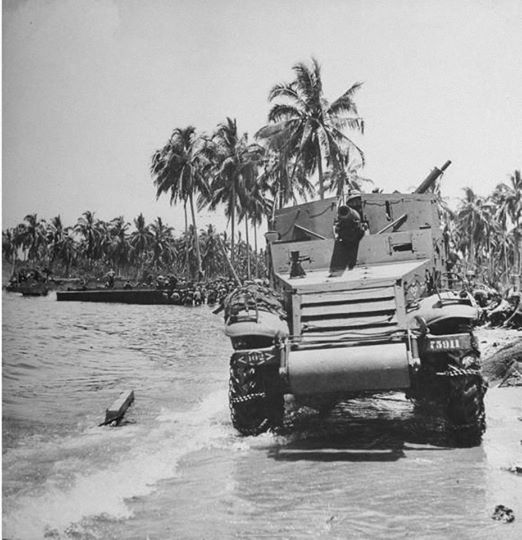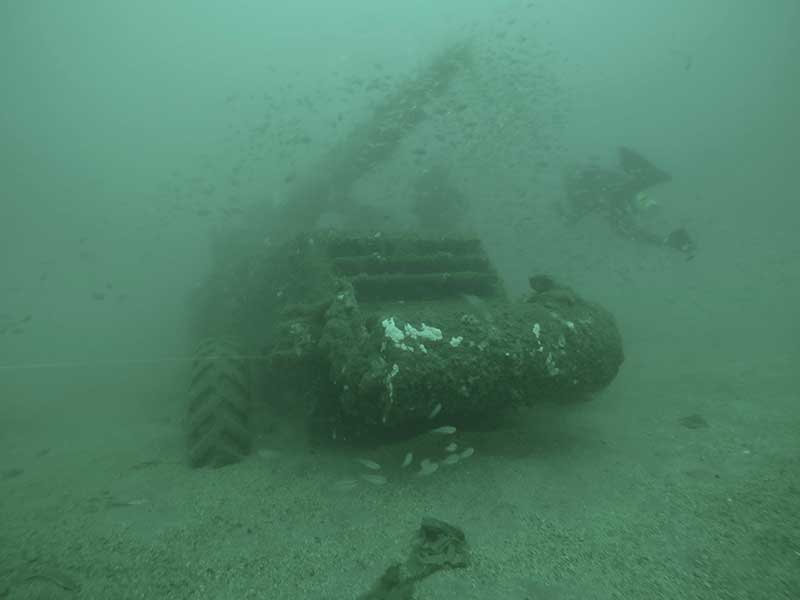Subic Bay – Do you have the “Lust for Rust”?
I just came back from a weekend of diving in Subic Bay. Subic is not your typical reef dive and beach destination in the Philippines, but if you have the “lust for rust”, this is the place to go. There are a plethora of wrecks to suit all skill and certification levels. I want to thank Boardwalk Dive Center, George Ang Dy Pay and Dante Lagac for their great guiding, technical training and dive operations. If you want to dive the wrecks, please ensure you visit them in Subic Bay Free Zone.

The waters of Subic Bay are very murky after the eruption of Mount Pinatubo on June 15, 1991, dropping 3 inches of ash into the bay. While there are clear days, there are times the water is so murky that visibility can be down to a meter or two even outside the wrecks. It means you need to stay close to your guide and pay attention.
Let me run down some of my favorites:
El Capitan (Depth 5-22M – Advance Open Water and Wreck Specialty)
Commonly referred to as ‘El Cap’, the USS Majaba (AG-43) was built by Albina Engine & Machine works in 1919 and originally designated as the SS Meriden. On 23 April 1942, She was acquired by the US Navy as the ‘El Capitan’ and immediately renamed USS Majaba upon commissioning and conversion to a ‘miscellaneous auxiliary’ on 14 May 1942.

We only wish the water was still this clear
During World War II, she served with distinction providing vital cargo runs for the US military. On her final cargo mission, between Tuglai and Guadalcanal, she was struck by a torpedo from a Japanese submarine. The impact destroyed her engine room and boilers, but she did not sink. Due to this damage, she was towed to Florida Islands, Solomons, was repaired, and spent the remainder of the war serving as a floating quarters and material storage ship. Following the end of the war, she was towed to the Philippines and eventually her name was struck from the Navy List on 28 March 1946. Whilst waiting at anchor in Ilanin Bay, Subic, to be returned to her pre-war owner, E.K.Wood Lumber Co., of San Francisco, Calif, she was sunk in a storm. The Majaba received one Battle Star for service during World War II.

The wreck lies on its port side in a maximum depth of 22m with the starboard side only 4m below the surface. She is approximately 3000 tons, 80m long and structurally intact. Divers can enjoy swimming inside her massive forward and rear holds and, if suitably trained and equipped, can enjoy comparatively safe penetrations into her cavernous boiler room. The combination of shallow depth, no current and intact structure makes this one of the dive sites perfect for novice wreck divers and wreck training.
LST (Depth 26-36M – Technical and Wreck Certification required for penetration; Advance Open Water and Deep Specialty)
The Landing Ship Tank (LST) was created during World War II for the purpose of supporting amphibious operations, by carrying large amounts of vehicles, cargo and personnel directly onto the shore. More than a thousand vessels of this type were commissioned by the US Navy. The basic design for the LST required a vessel capable of ocean travel, yet with a shallow draft for beaching operations. The ultimate design incorporated a variable ballast system, a length of 100m (328ft), a 15m (50ft) beam and minimum draft of 1.2m (3.8ft).
With an unloaded weight of just 1780 tones, this scheme served to distribute the ship’s weight over a large area, allowing it to float higher in the water for landing. They could accommodate all types of Allied military vehicles and later production designs could also house and deploy a landing craft utility (LCU) or landing craft tank (LCT) from its main hold. She could transport over 2200 tons of cargo, men or machines. Her crew complement was 8-110 officers and 100-115 sailors.

This 100-meter long vessel was deliberately scuttled in 1946 and now sits upright in the center of the bay with a maximum depth of 36m. Her giant bow doors have dropped away to the sea floor, although her main loading ramp remains raised. Along her front and mid-section, the wreck is intact and contains a football pitch sized vehicle loading deck, which is easy to penetrate at each end. Her forward gun platforms (for 1x 3” gun and 2x twin 20mm guns) remain in place. The top decks of her stern (rear) section have collapsed structurally, although the tangled wreckage attracts a wealth of marine life and schools of large barracuda, jacks and fusilier are common here.
Any penetration should only be attempted by certified wreck divers only due to high levels of siltation. Penetration dives typically require staged decompression stops, so a technical certification is required.
USS New York (Depth 18-30M – Technical and Advanced Wreck Certification required for penetration; Advanced Open Water)

The USS New York is one of the most famous wreck dives in Asia. She was built in 1891 as the second in a line of armored cruisers, with the original designation of‘ACR-2′ (Armored Cruiser No.2). The New York was upgraded (including the turreted 8-inch guns) and became the flagship of the US Asiatic Fleet and Pacific Squadron.

Inside USS New York – Photo by Alfred Gao
She participated in World War I and was renamed ‘USS Saratoga’ and later, the ‘USS Rochester’. In 1933, she was finally laid up at the Subic Bay to be cannibalized for spares. She was eventually scuttled by the US Navy in 1941 during their preparations to withdraw from Subic to prevent her four 8 inch guns falling into enemy hands.

USS New York boiler room – Photo by Alfred Gao
Resting on her port side at a depth of 27m (mud and silt about ½ way up her deck), she is still mostly intact, except for explosive damage caused by salvage operations in her mid-section. Fortunately for divers, her 4 massive turreted deck guns and enormous propeller are still intact. The wreck is 110m long, making it one of the largest wrecks in the Bay. Diving the USS New York is an awesome experience for divers and the scale of the wreck can really be appreciated as you swim alongside her main guns or around her propeller.

Dante Lagac in the USS New York engine room – Photo by Alfred Gao
If you are a certified technical and advanced wreck diver, the New York is an astounding vessel to do repeated penetrations, seeking out different routes through the ship. The large and small engine rooms are well worth a visit for the suitably trained and guided. Diving her is not without its risks. In 2011, a very experienced Dive Master and Subic Bay dive guide, Steve Brittain, took two Hong Kong divers into the wreck of the USS New York. Only one of the three, a Hong Kong diver, made it back to the surface again. The details of what happened will never be known, but the accident is a grim reminder to anyone who dives in overhead conditions.
L2D “Tabby” (Japanese DC-3/C-47) (Depth 42-44M – Technical Certification required)
In February 1938 Nakajima Aircraft Company acquired the license rights to build copies of the Douglas DC-3 for $90,000 after they already successfully bought the license for the precursor Douglas DC-2 in 1935.

The first Nakajima L2D prototype aircraft were powered by Pratt & Whitney SP3G radial engines and made their maiden flights in October 1939 and entered production in 1940 as L2D1 with parts imported from the U.S. while the two Shōwa examples were being assembled to Japanese production standards to simplify manufacture. Differing in minor details, mainly due to the use of locally produced Mitsubishi Kinsei 43 radial engines of similar power, the initial series from both companies were very similar to its Douglas antecedent.
The term “Tabby” refers to the name given to the aircraft by the Allied Forces. The aircraft was initially intended for both civilian and military service, but with the onset of World War II, production was concentrated to produce the Tabby to transport cargo directly to the battlefield.
There were 487 Tabby’s built in total with Nakajima producing 71 and all the rest, a total of 416 aircraft, built by Shōwa. Very few of these aircraft survived to see the end of the war, though due to the shortage of aircraft at the time of surrender some Japanese L2D’s and their crew were used by the RAF creating the Gremlin Task Force.
The L2D “Tabby” Airplane Wreck was discovered in late 2013 and is lying inverted on its back at a maximum depth of 45 meters. It has hard damage on the cockpit but divers can still identify the pilot seats and control sticks. The fuselage is still intact with the side door removed. The engines and the propellers are torn away from the airplane when it crashed, they can be located a few meters north of the wreck.
Skyraider (Depth 36M – Technical Certification recommended for a longer look; Advanced Open Water and Deep Specialty)
Towards the end of War World II, the US military desperately required a long range, carrier-based, high performance, dive-bomber with a tremendous ordnance payload. The Douglas Aircraft Company produced prototype models before being awarded the contract to produce the “Skyraider”. The aircraft were turned out at a rate of up to two a day at Douglas’s El Segundo power plant in Southern California.

The Douglas Skyraider first hit the skies in March 1945 but didn’t see wartime service until the Korean War in 1950. The aircraft soon became the backbone of US Naval operations throughout the Korean War. The Skyraider was built in almost 40 different configurations. The first wide-body variant flew in August 1951 and was intended to carry additional crew, electronic equipment, and weapons for anti-submarine warfare.
It is thought that the aircraft was detached from the USS Lexington CV-16 and crashed into Subic Bay on the 9th of January 1962 killing its 4 crew. The Skyraider wreck is in remarkable condition, considering the length of time it has been underwater, with only the engine and cockpit shrouds missing.
The aircraft here is a 4 seater with 2 forward facing front seats and 1 forward and 1 backward-facing rear seats. It is sitting upright on a flat silt bottom at a depth of 36 meters. The aircraft is fitted with 2 x 20mm cannons on each wing and all electronics, gauges and controls are clearly visible. It is thought that the aircraft is a AD-5Q variant.
The wreck is extremely impressive and becomes our third aircraft dive site along with the Japanese built DC3 (Tabby) and F4 Phantom located 7km outside Subic Bay. The aircraft is home to Sweet Lips, Banded Coral Shrimp, Hinge Beak Shrimp and Juvenile Jack Fish.
Sakura Maru (Depth 56M – Technical Certification required; Trimix Training site)
Just off Grande Island, another Japanese wreck was found and identified as the Japanese IJN Auxiliary Minesweeper Banshu Maru No 52, a converted Japanese whaling or fishing vessel. After divers have found beer bottles on the wreck she was also given the nickname “Sakura Maru”.
The Banshu Maru No 52, struck a mine and sank in Subic Bay on January 20, 1942, not long after the Bay was abandoned by the Allied forces.
This a great site for deep air dives coupled with deco or trimix training dives. Don’t get narc’ed!
M3 Halftracks (Depth 37M – Technical Certification recommended; Advanced Open Water and Deep)
M3 Half-Track Vehicle is a high-mobility infantry vehicle and was first produced by the White Motor Company. The first prototype halftrack utilized a White manufactured chassis and the body of the M3 Scout Car. The first design was based on a Citroen-Kegresse vehicle and where possible the developers used commercial parts for reliability and speed of production, with obvious adaptations and additions to provide a suitable combat vehicle for armored infantry regiments. The Ordnance Department rectified mechanical complaints after receiving field reports from the Philippines. The vehicle was standardized in 1942 and built by the Autocar, Diamond T and White Motor Company. 15,000 units and more than 50,000 variants from the first design were manufactured. The M3 Half-Track Vehicle and derivatives were used by nations globally in wars including World War II, Korean, and Vietnam to name but a few. It last saw service in 1975 during the Lebanese Civil War.

It was first used by the U.S Army in the Philippines by the Provisional Tank Group when the Japanese began their invasion. They were initially highly disliked by their operatives and nick-named the “Purple Heart Box”. The armor could not withstand machine gun fire and there was very little top protection from air bursting artillery shells.

M3 Half-Tracks Dive ‘Sites’, yes that’s right, there are two of them that leaves you with more questions than answers. Sitting upright in 37m of water, 9 meters apart with 11897AS 75mm Howitzer guns still in firing position, facing roughly opposite directions just off Cubi Point and very near the Douglas SkyRaider, this has become quite a spectacle. No one is quite sure how they ended up in the bottom of Subic Bay.



Leave a Reply
Your email is safe with us.